Resources - NGR Technosys
Easily Create Pages Using WYSIWYG Editor
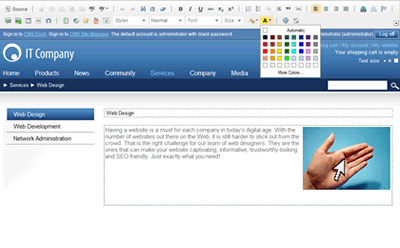
If you're familiar with Microsoft Word, you will become friend with our built-in WYSIWYG editor in no time. It provides all formatting features you can think of, including bullet points, tables and pre-defined CSS styles. You can easily insert images, YouTube video and create links to internal or external content.
Personalizable WYSIWYG Editor Toolbar

The editor toolbar can be easily personalized for different users so that they have just the right amount of power. It helps you keep you design consistent and polished. While the administrators may use all toolbar buttons and edit the HTML source code, the casual editors may be allowed to use only bullet points and create links, but not to change text colors.
Developers can also prepare predefined styles and let the editors choose from them instead of coming with their own every time they need to create a highlighted text or some special text style.
Easily Insert and Resize Images
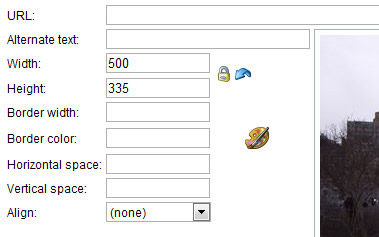
NGRPulse allows you to easily insert images directly from your computer, without multi-step uploading and selection of images - just click the image button, choose the image on your disk and you're done!
Once you insert the image into the text, you can resize it while preserving the aspec ratio. Unlike many other systems, NGRPulse automatically resizes the image for the required size instead of displaying a five megabyte image in the 200x100 pixels size. It also keeps the original, so if you decide to change the size again, you will get a nice picture.
Moreover, you can choose from several effects, such as displaying a larger image when mouse overed or displaying a full-size image in a new windows when the image is clicked.
Insert Images, YouTube, Flash and Dynamic Features
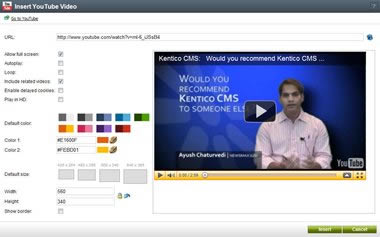
Beside images, you can also insert YouTube videos, Flash or music files. The editor also supports inserting of on-line forms, rating buttons, polls and custom controls created by your developer.
Insert Links
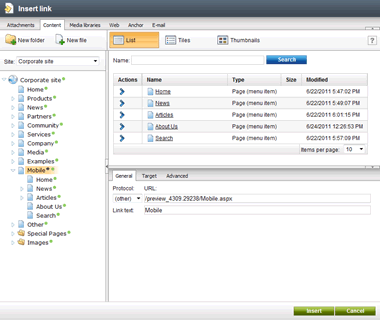
You can easily create links to the following items:
- other pages on your website
- images and other uploaded files
- content anywhere on the Web
- anchors in documents
- mailto links
NGRPulse automatically takes care of your links, so if you rename or move some page, it remembers its original address and you don't have to update the links.
Create Standards-Compliant and Accessible Content

The WYSIWYG editor automatically fixes the HTML, so that it produces a valid code. If you want to create accessible content, you can easily add ALT attributes to images and links through the user interface.
Paste from Word and Other Applications

When you're pasting formatted text from Microsoft Word or other applications, you can either paste it as plain text or you can have the editor automatically clean the text and remove unwanted formatting elements from the source code.
Keep Full Control Over Content
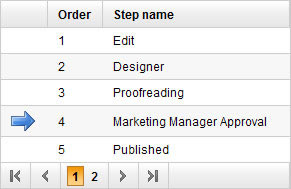
Creation of website content is often a collaborative task, carried out by whole teams rather than individuals. Workflow in NGRPulse is a great tool to make collaborative authoring of content more efficient. It allows you to set up a fully customizable document approval process, ensuring that you can delegate content creation while keeping control over what's published. The workflow automatically sends e-mail notifications to the appropriate users to keep everybody updated.
Easy and Straightforward
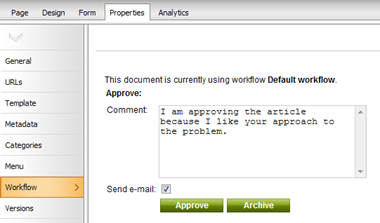
Documents using workflow go through a number of workflow steps during their life-cycle. Only specified users can make changes to a document in a particular workflow step. They can:
- edit it
- approve and submit it to the following step
- reject it to the previous step if it needs to be re-worked and add comments
This allows easy distribution of work within your team during the content creation process.
Fully Customizable Workflow Process
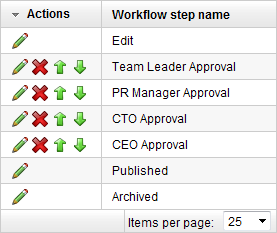
You can have an unlimited number of workflow steps for each workflow. Steps can be easily added or re-ordered through the browser-based interface. For each step, you can define the users who can edit, approve or reject the document.
Configurable Workflow Scopes
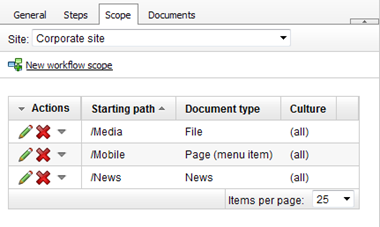
Not all documents on your website need to go through the same workflow. For each workflow, you can configure which documents will use it. These documents can be selected based on their:
- document type
- language version
- location in the website structure
Overview of Involved Documents

You can view a list of all documents that use a particular workflow. The list can be filtered based on various parameters, so you have an overview of all involved documents at your fingertips. You can even perform bulk actions and for example approve multiple documents on one click.
Automatic E-mail Notifications
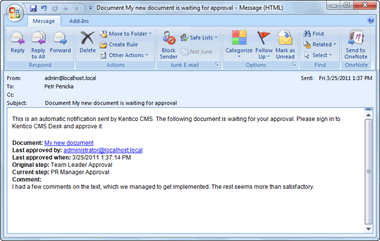
E-mail notifications are sent automatically to:
- all involved users when a new document is waiting for their approval
- document authors whenever some of their documents moves to a different workflow step
This eliminates lots of redundant communication within the content editing team.
Keep Track of All Changes
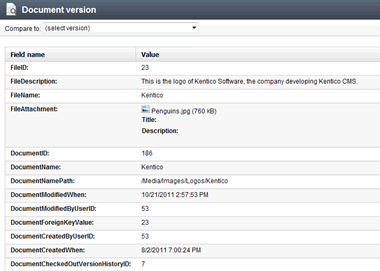
Documents with workflow automatically use document versioning. It allows you to compare particular versions and keep track of changes made to documents in each step.
Avoid Overwriting Other Users' Work

In a collaborative content editing environment where a single document can be edited by multiple users, control of access to shared documents is of the highest importance. Content locking gives you an easy solution to this problem, letting you check out the document you are currently editing. Checked out documents can not be edited by other users until they are checked back in.
Empower Users With Widgets
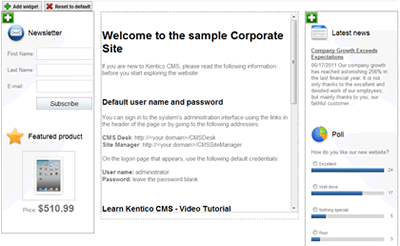
The widgets give more power to end users and lower the workload of developers. Widgets are components that can be placed onto pages and they provide static, dynamic or interactive content, such as on-line form, list of the latest news, newsletter subscription box etc. Widgets allow users without technical knowledge to create parts or even whole pages without any technical knowledge.
Advanced Page Editing
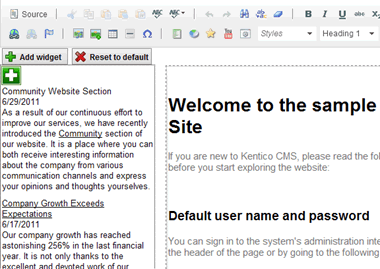
Widgets give content editors the ability to modify more than a page text and images. The overall design of the page may be customized and any functionality implemented by a widget that can be inserted with only a couple of clicks. This gives editors more flexibility since they can make these changes by themselves instead of asking a developer to adjust the page design.
Personalized Home Pages and Dashboards
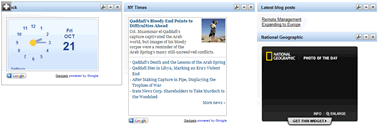
Widgets can also be used by registered website visitors to create personalized home pages or dashboards. Once the developers designate a zone on a page as customizable, you can add or configure widgets in it to create the content that best fits your individual requirements. Any changes are only visible by the specific user that made them.
Integration with Groups
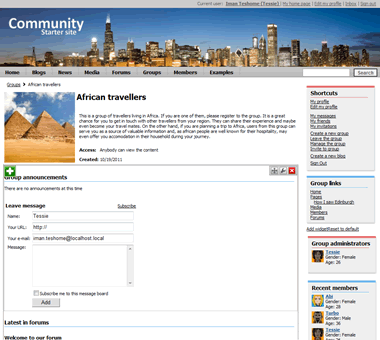
Just like for content editors, widgets allow the administrators of Community groups or Workgroups to customize the design and functionality of pages that belong under their group. This can be done directly on the live site, even if the group admin doesn't have access to the editing interface of the CMS.
Unlimited Possibilities
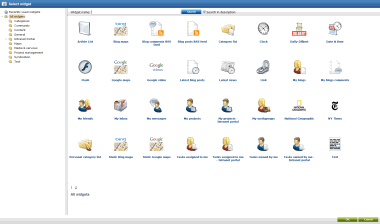
NGRPulse is delivered with a rich selection of built-in widgets that cover a wide range of functionality, including:
- forms
- banners
- dynamic content
and much more.
The default feature set can easily be expanded by adding a widget based on any existing Web part. If required, developers can create widgets with completely new functionality using Visual Studio.
Flexible Configuration Options
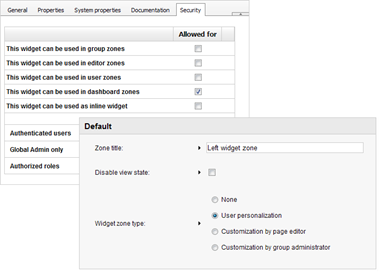
While widgets give a lot of power to the website end users, your developers and administrators still remain firmly in control. All areas where widgets can be placed are defined by developers and every widget can be individually configured to determine where and for which user roles it is available.
Create Standards-Compliant Websites
With NGRPulse, you can easily build standards-compliant websites. Whether you need to use XHTML, HTML 5 or follow accessibility standards, such as W3C WAI or Section 508, NGRPulse will help you.
XHTML and HTML 5
The code rendered by NGRPulse is compliant with XHTML 1.0 and HTML 5 specifications. Moreover, we use a unique output filter that fixes (X)HTML incompatibilities introduced by the ASP.NET engine.
Of course, the compliance also depends on your content and on the code that you render in page templates and transformations.
The built-in WYSIWYG editor automatically fixes the entered content so that it saves as a valid XHTML code.
CSS and CSS Layouts
NGRPulse supports both table- and CSS-based layouts/positioning. You can also use the CSS-based menu control that renders UL/LI elements, without any JavaScript.
Accessibility - W3C WAI and Section 508
NGRPulse meets the recommendations listed in the W3C Web Content Accessibility Guidelines 1.0 and it follows U.S. Government Section 508 requirements.
What NGRPulse does for accessibility:
- It renders valid XHTML code.
- It supports the use of CSS-based layout (instead of inaccessible table layout).
- It supports CSS-based menu controls that renders the menu from structural elements and can be highly customized using CSS styles and JavaScript.
- This kind of menu can be easily followed by users of screen readers.
- It supports dynamic rendering of site map (easier orientation).
- It supports friendly (=easy-to-read and describing) URLs.
- It supports custom page title, keywords and metadata section for every page (easier orientation).
- It allows content editors to enrich the text (links, images) with additional alt/title information that improves accessibility.
SEO
NGRPulse allows you to build Search Engine-optimized sites.
Build Websites Faster with 250+ Web Parts Out of the Box
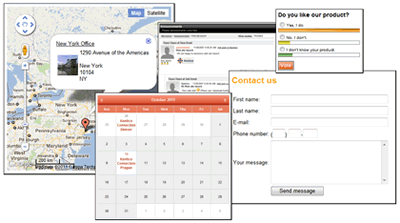
NGRPulse provides you with more than 250 web parts that cover any common scenario - from navigation menus, to repeaters and datalists, to module-specific web parts, such as Forum or Shopping Cart. Every web part is highly customizable in terms of design and behavior. It means less coding and more of you job done!
Drag and Drop, then Configure
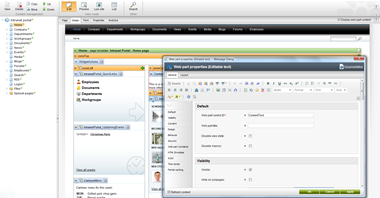
Web parts can be easily added on the page, dragged and dropped between web part zones and configured - all of that through the browser interface.
Use web parts in PHP
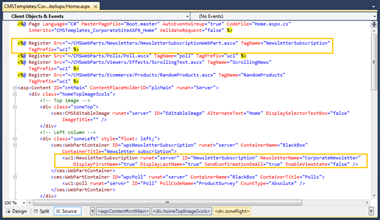
Web parts are standard PHP user controls which means you can also use them on your PHP page templates or other PHP pages.
Developing Your Own Web Parts

You can develop your own web parts using PHP. Web part is a user control that inherits CMS Abstract WebPart class. The rest is simple.
Customizable Web Part Layout
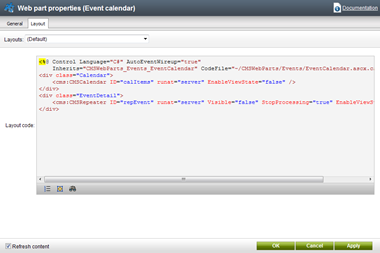
Most NGRPulse web parts allow you to modify the HTML code they render through the browser interface. It allows you to change the layout of various built-in dialogs as you need, without overwriting the web part code and risking conflicts during a CMS upgrade.
Boost the Learning Curve with Simplified User Interface
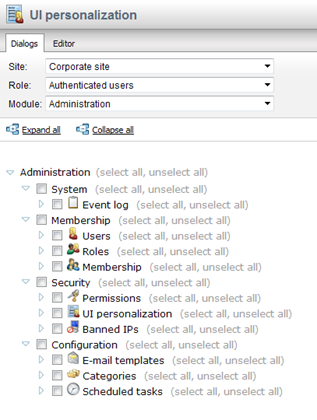
Although NGRPulse provides lots of features, not every user needs all of them. That's why NGRPulse allows administrators to personalize the user interface for content editors and remove all options they do not need. Personalized user interface leads to faster adoption by end users, shorter training time, higher productivity and lower risk of mistakes.
Customize User Interface to Reflect User Role and Experience
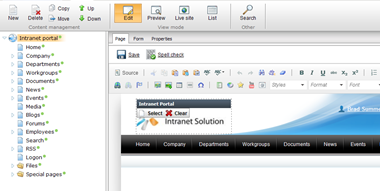
Using the user interface personalization you can customize the menus and even particular dialogs for chosen user roles.
You can also allow users to see only part of the website they are responsible for in the content tree (for example only the news section) and hide documents they are not allowed to read.
Customize the WYSIWYG Editor Toolbar
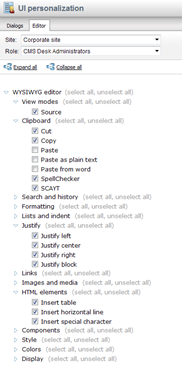
You can also choose which toolbar buttons should be displayed in the WYSIWYG editor and eliminate features that could break the design, such as text background color or font type.
Integrate Custom Modules into NGRPulse UI
UI Personalization allows you to add your own items into NGRPulse menus and seamlessly integrate your own modules and features into the CMS. Since you don't modify the CMS code, your customizations will survive future upgrades of the CMS.
Make Information Easy to Find with Tags and Categories
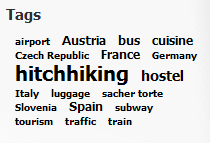
Tags and categories allow you to make your content easier to find and navigate through. NGRPulse supports several ways how to categorize your content and relationships between content and use this categorization for navigation.
Content Tree Hierarchy
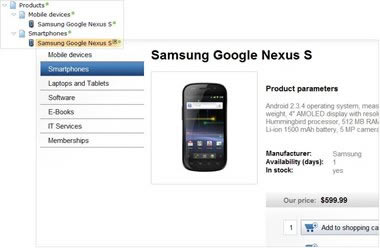
All content in NGRPulse is stored in a hierarchical repository. The documents can be organized into folders or site sections that represent categories.
Tagging
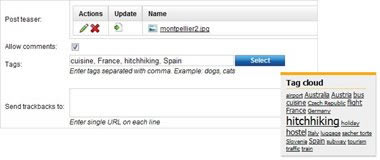
Any type of document (not only blog posts) can be marked with tags. This allows you to easily group articles, news, products and other types of content based on topic. Tags are organized into tag groups and these can be displayed as a tag cloud. The tags can be predefined by administrator and the content authors can define their own tags.
Categories
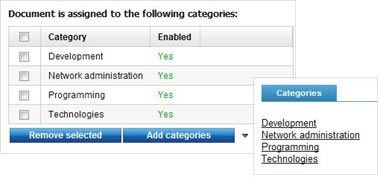
Additional categories can be used at places where you need an extra categorization along with content tree hierarchy and tagging. Categories can be defined by administrators and content authors can define their own categories.
Many-to-Many Document Relations
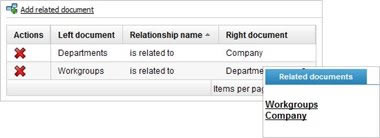
You can also define many-to-many relations between documents in NGRPulse repository. This feature can be used for displaying things like "related articles", "recommended accessories", "similar products", etc. Every relationship has its name, such as "is related product to" or "is related article to" and these names are fully customizable.
Stay on Top of Every Project
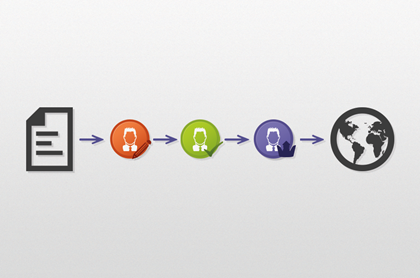
NGRPulse CMS gives content administrators full visibility into projects throughout the entire content lifecycle. Without the need for a high level of technical knowledge, the standard workflow feature allows each administrator to define workflow steps through a browser-based interface. Each step can be easily modified on the fly, without the need for restarting or reconfiguring the software.
Get Notified along Every Step
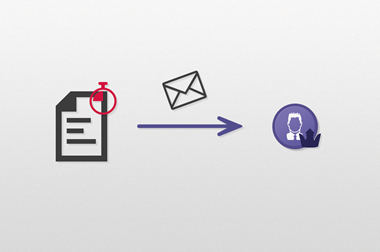
When a step is complete, the process will automatically notify editors by e-mail that a document is awaiting approval. This ensures all pairs of eyes have seen the latest version of the content, and no loose ends are left untied.
Define and Customize All Rules
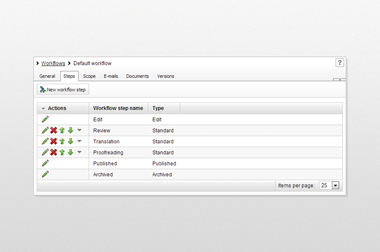
The NGRPulse CMS Standard Workflow lets you define an unlimited number of steps for any document you designate. By using the intuitive browser-based interface, the defined steps can be edited and ordered.
Never Overwrite Someone Else’s Work

Thanks to content locking, you’ll never worry about overwriting changes that another user might currently be working on. Content locking causes each document to be “checked out” to one user at a time. Other users may only add changes when the document is checked back in by the system.
Get a Full Overview of the Process, From Start to Finish
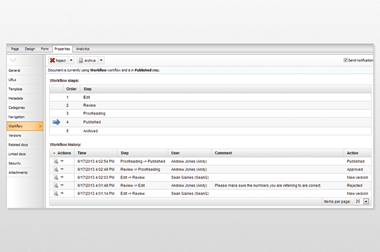
Throughout the workflow process, users can get a full overview of status of all documents. The content administrators can view the full version history of the document and how it went through the workflow process.
Avoid Typos with the Built-In Spell-Checker
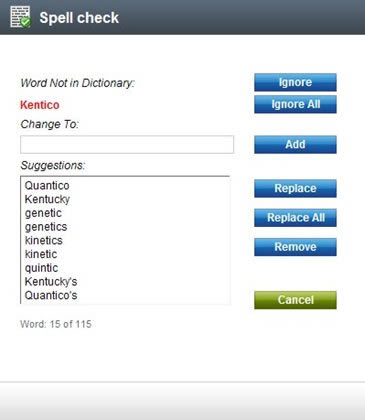
NGRPulse enables you to avoid typos using the built-in spell-checker, accessible from the administration interface. You can also use Spell-check as you type functionality in the built-in WYSIWYG editor.
Spell-Check All Text Fields
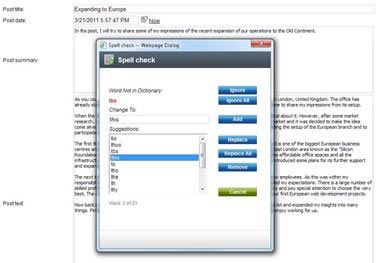
If you click the Spell check button, the spell-checker reads all text fields and checks their content. If it finds a mistake, a dialog window will pop up. You can ignore the word, add it to the dictionary or replace it with the suggested word. You can also ignore or replace all occurences of the word.
Spell-Check As You Type

With Spell-check As You Type service provided by WebSpellChecker.net, you can see the typos in the WYSIWYG editor immediately as you edit the text. This service is provided for free and commercial edition with additional languages and without ads can be purchased with 10% discount for NGRPulse clients.
Secure Platform for Your On-line Presence
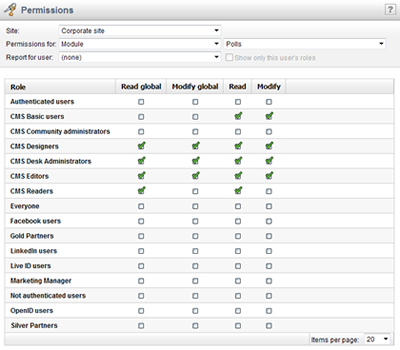
Your website represents your company. You want to be sure that information on your website are published only by authorized people, that the website won't be hacked and that your reputation won't be harmed by leaks of personal data stored in your databases. NGRPulse recognizes security as one of the top priorities and provides you with a secure platform for your website.
User Management
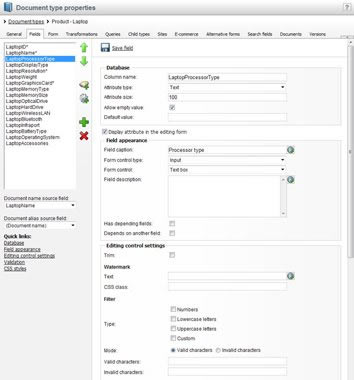
NGRPulse can store milions of user accounts in its database and they can be easily managed through the administration interface. User profiles may contain custom fields defined by administrators.
New user accounts can be created by administrators, imported from external systems or the visitors can register on the website and create their account. NGRPulse comes with customizable webparts for registration and account management by users (change password, edit user details, etc.).
Customizable User Roles
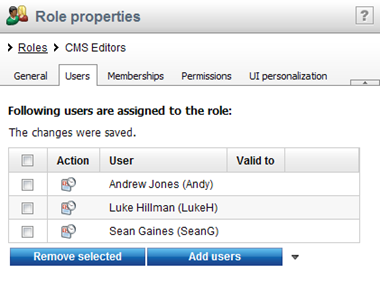
Every user can be assigned to any number of roles. While there are a few pre-defined roles in NGRPulse, administrators can easily define their own roles and grant them with permissions.
Module Permissions
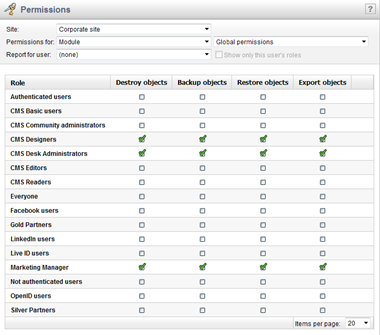
Every module has a predefined set of permissions (such as read, modify, delete, approve, etc.) and administrator can grant users with these permissions. If you develop a custom module in NGRPulse, you can even leverage the built-in permission system for managing access to certain features.
Content Permissions
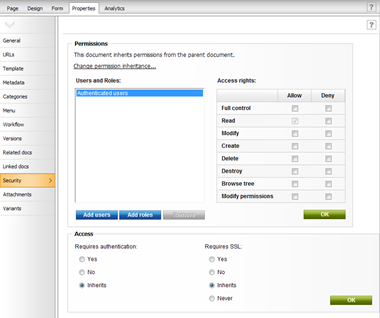
NGRPulse provides highly granular permissions for managing content. Since the content is organized in a content tree, you can set permissions for the whole site, for chosen section or for a single document. The permissions can be inherited to underlying content nodes and you can even break the inheritance and set specific permissions for the chosen section. Permissions can be also denied on underlying pages which overrides the permissions granted to the parent content.
Personalization Based on Permissions
Content and navigation displayed on the live site can be personalized based on user read permissions for the given document. If the user cannot read the page, she won't see it in the navigation.
Double Opt-in Registration
When users register on the website, you may require them to confirm the registration by clicking a link in a confirmation e-mail, so that you can verify that their e-mail address is valid. You can also choose to approve all newly registered users before they can sign in.
Security Best Practices
We at NGRPulse pay lots of attention to creating a secure CMS platform. Every new version goes through detailed security testing and our developers are trained on writing secure code. We also use internal automated tools for identifying possible security threats in our code.
We have also created a Security White Paper for our customers that covers best practices for writing secure code and creating secure websites.
Mass E-mails
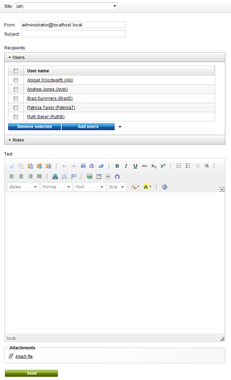
Administrators can send mass e-mails to all users or chosen users.
Time Zones
Site members can choose their time zone and NGRPulse modules then display the time in their time zone. For example if your server is located in the USA, but the user chooses London time zone, she will see all times in forums and other modules, as well as in the administration interface converted to her time zone.
Performance without Limits
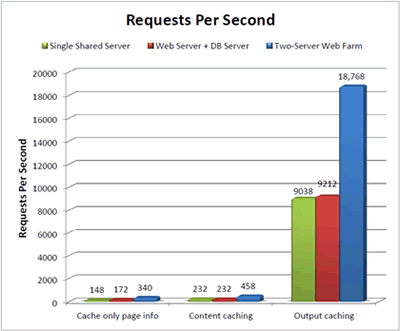
NGRPulse platform scales extremely well in the web farm as well as in the cloud. With NGRPulse, you can easily deliver high-performance websites that are always on.
Unlimited Performance
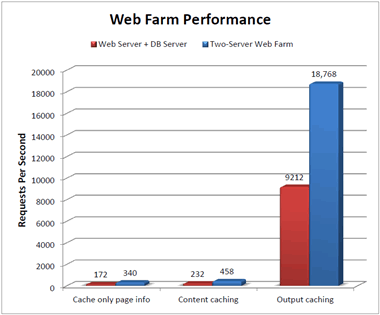
NGRPulse performs extremely well on a very standard hardware configuration. Still, if you need more power and scaling up (adding more CPU and memory) isn't enough, you can easily scale out and deploy NGRPulse in a webfarm. NGRPulse runs in a standard Windows Server web farm environment and it has built-in mechanisms for automatic synchronization of files and in-memory objects across servers. Based on our performance tests, adding a second web server doubles the overall performance.
If the database server becomes a bottleneck, NGRPulse supports SQL Server Merge Replication which means you can also scale out your database servers. It means you can achieve virtually unlimited scalability with NGRPulse.
Advanced Caching Options
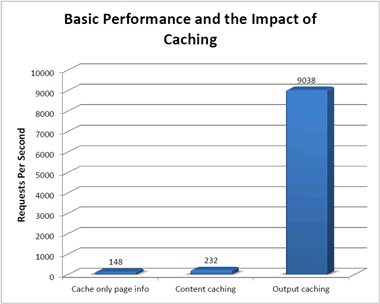
NGRPulse comes with granular cache settings that allow you to configure cache for files, web parts and pages. The full-page caching represents the most powerful option as it stores pages in memory and serves them without touching database or disk.
Manage Large Websites
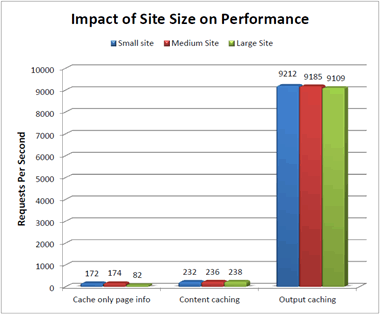
Standard NGRPulse installation was tested for management of 100,000 items (pages, articles, news, etc.) in the content repository and 10,000,000 users in the database. Still, we have clients who manage milions of content items using project-specific configuration of NGRPulse.
Analyze and Understand Your Website Data
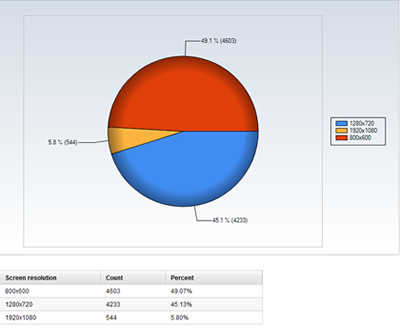
The reporting module is a universal sub-system for creating reports from data stored in the NGRPulse database. It's used for the Web Analytics module, but also for reports on documents in the content repository, workflow, e-commerce data or community activities. You can also create your own reports.
Get Powerful Insights into Your Website Content
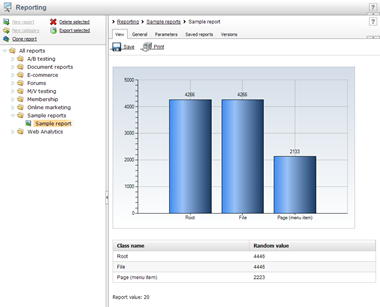
Do you want to know which documents have been recently updated? Or which documents are scheduled to expire in the nearest days? These and other questions are effectively answered by the content reports, including:
- Content inventory report
- Documents waiting for approval
- Archived documents
- Expired documents
- Recently modified documents
- Checked-out documents
Analyze the Performance of Your On-line Store
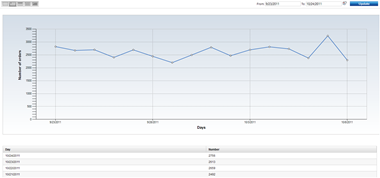
Daily monitoring of the on-line store results is important for identifying new trends and potential threats. Using the e-commerce reports you see in more detail:
- Revenues in the given time period
- Number of orders in the given time period
- Current inventory
- Top customers
Easily Create and Customize Reports
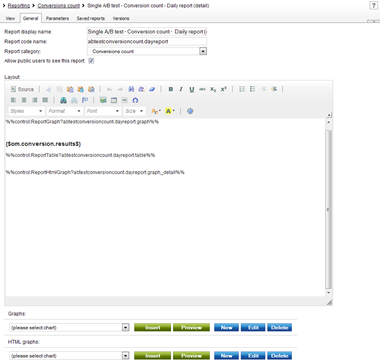
You can design the layout of your report and insert a chart (line, column, pie), table or scalar value that display data specified by your SQL query.
You can also define a filter for your report using various fields, such as textbox, date-time picker, drop-down list and others.
You can also print or save a report at any time and make a snapshot of your data in the given moment.
Go Global with Multilingual Content
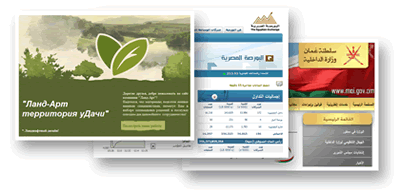
Can your website speak Chinese? Having a website translated into multiple languages is the first step to grow your business to new markets. NGRPulse allows you to easily manage websites in any number of languages, including Chinese, Russian or Eastern European languages.
Highly Flexible Site Structure
With NGRPulse, every language version may have its own site structure that is completely independent from other languages.
Get Control Over Translated Content
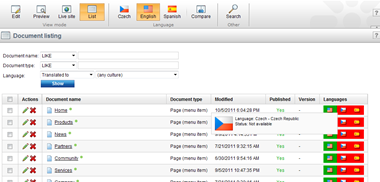
NGRPulse will show you which documents are not translated yet or which are outdated in comparison to the default language.
Fallback to the Default Language
If some document is not translated into the required language, the website can optionally display the default language version.
Smart Language Selection

When a new visitor comes to the website, the appropriate content culture can be automatically displayed:
- based on the domain name (e.g. mycompany.fr would default to French version)
- based on the browser language settings
UNICODE and Eastern Languages
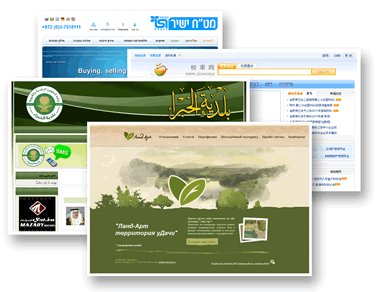
All content is stored in UNICODE and displayed in UTF-8 or UTF-16 encoding which ensures compatibility with any language, including Russian, Chinese, Hebrew or Arabic.
Right-to-Left Support
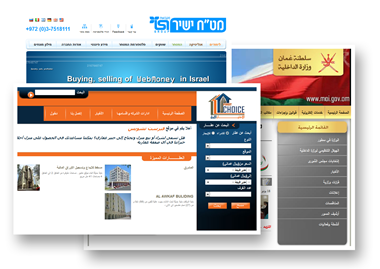
NGRPulse automatically supports languages that read from right to left (RTL). A single web site can be created in both LTR and RTL language, such as Hebrew or Arabic. Also, NGRPulse editing interface works correctly with RTL languages.
Join the Mobile Revolution with NGRPulse CMS

With mobile browsing at an all-time high today, it’s more important than ever for companies to have a mobile-friendly website. Whether customers are browsing from a smartphone or tablet, the design must be responsive to match the device being used, load quickly, and provide a great customer experience. NGRPulse CMS comes with built-in responsive design capabilities, enabling you to create a dynamic website experience for any device.
Responsive Design

With the responsive design capabilities of NGRPulse CMS, your website design will automatically adapt to different screen sizes, and easily translate to a mobile platform from the desktop version. With responsive design, you create your website once and have it adapt to various screen sizes and devices on the fly.
Preview Website on Various Screen Sizes
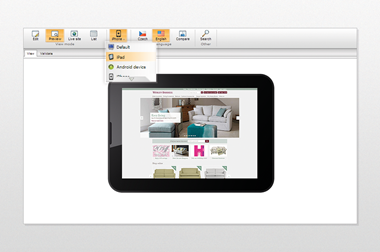
With the mobile preview option, content administrators can see immediately what the website looks like on different screen sizes directly in NGRPulse CMS. It saves their time and allows them to adjust the content immediately if needed.
Advanced Device Detection
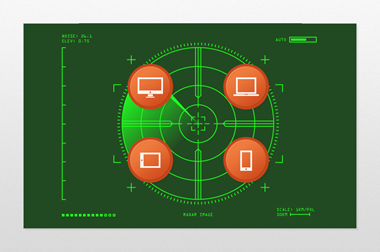
Not only will developers find it simple to create high-performance mobile websites with NGRPulse CMS, but once built, the sites can leverage 51degrees.mobi device data to automatically detect the device being used by the visitor. This will help you optimize the customer’s experience for specific devices and leverage their unique capabilities.
Say Goodbye to Long Load Times with Automatic Image Resizing
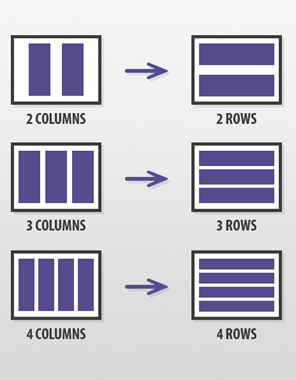
When your site is complete, rest assured that all images on each page will automatically fit to the visitor’s device. This dramatically reduces the site’s load time, and replaces the need for resizing images manually.
Customizable Mobile Layouts
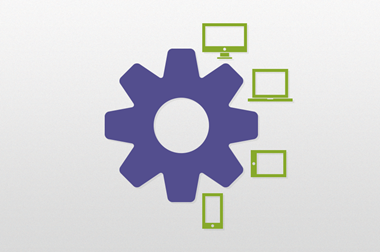
Beyond the standard responsive design technique, developers can also control web page layout on the server side. They can define specific mobile layouts for particular device profiles and ensure that the page contains only content that is actually rendered, which greatly shortens load times. This approach is also suitable for websites that were originally built without mobile devices in mind.
Easily Publish Video, Images, Music or Flash
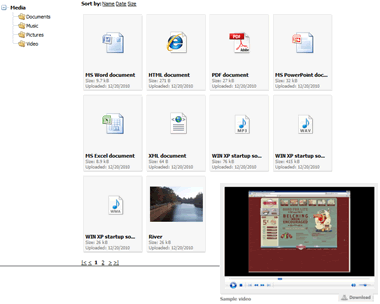
Using NGRPulse you can create multiple media libraries where you can store images, music, video, PDFs, presentations or even Flash or Silverlight applications. You can insert these files into the text or display them as galleries. The content of your media libraries may be uploaded by site visitors, site members or group members.
Media Library Main Features
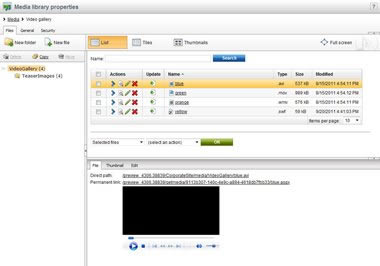
With Media Libraries, you can easily:
- manage large number of files
- manipulate large files, such as video files
- upload large files using FTP
Alternatively, you can also upload files to the NGRPulse database or file system and manage them as any other content. Learn more about other file management options.
Uploading Files into Media Libraries

There are three ways how files can be uploaded into your NGRPulse media libraries:
- using the administration interface
- on the live site using the Media gallery or Media file uploader web parts
- externally, directly into the file system; e.g. via FTP
Displaying Files from Media Libraries
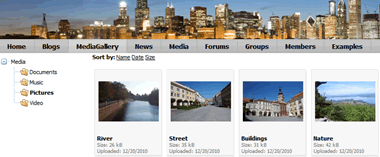
With the Media gallery web part, you can display content of your media libraries on the live site. If you need to insert media library files directly into the text, you can use the Insert image or media and Insert link dialogs of the built-in WYSIWYG editor.
Security and Sharing
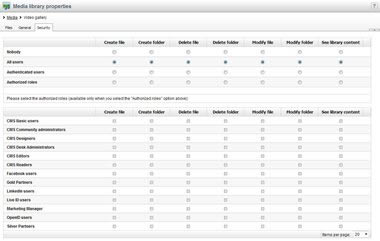
You can set different permissions for each gallery and specify who can upload, manage and view files.
You can also allow website visitors or authorized site members to upload files into libraries through the website and share them with others.
Easily Re-use Content at Multiple Places
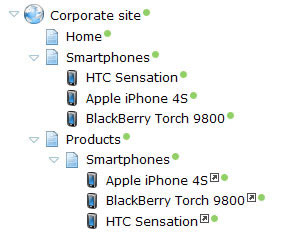
Having the same content in multiple sections of your website no longer requires duplicate documents. With linked documents in NGRPulse, you can have multiple documents sharing the same content. While you edit one of them, all the others get updated automatically.
Shortcuts in the Website Structure
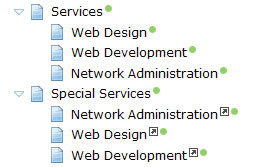
Linked documents represent shortcuts to standard documents in the content tree. You can have a virtually unlimited number of linked documents pointing to a single real document.
On the live site, all these documents show the same content, while they are located at different places in the website navigation.
Easy Creation of Linked Documents
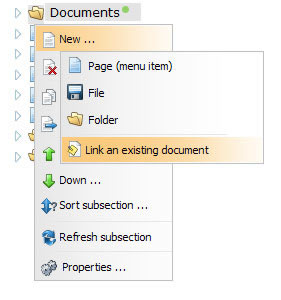
Creating linked documents is just as easy as creation of standard documents. You only:
- choose the location where you want to add the linked document
- create it in two clicks
- select the target document to which you want it to be pointing
Overview of Linked Documents

With duplicate content, you can easily forget about all the places where you have it on the website. Not with NGRPulse!
For each document that is either a link or has some documents linked to it, you see which documents are linked to it.
Display Image Galleries as You Want
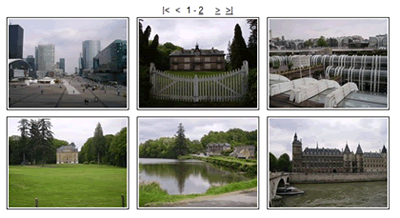
NGRPulse comes with several built-in web parts for displaying image galleries and you can easily integrate other scripts based on jQuery or other scripting library.
Image Rotator
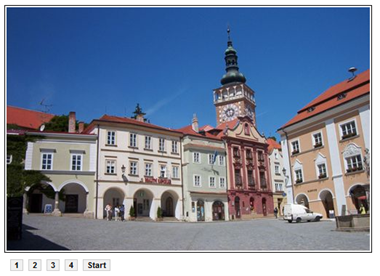
Image Rotator web part displays images in set interval and allows users to skip to chosen image.
Lightbox Gallery
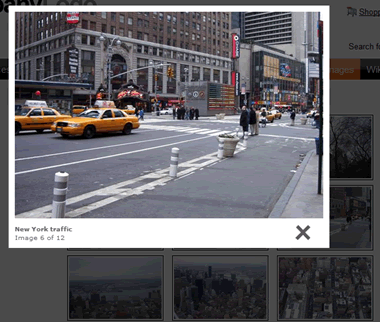
Lightbox gallery displays the images on the page and shows a detail image in a new layer when clicked.
Media Galleries

You can also display images, videos, flash and other types of media using the built-in Media Library module.
Smart and Powerful Search Solution
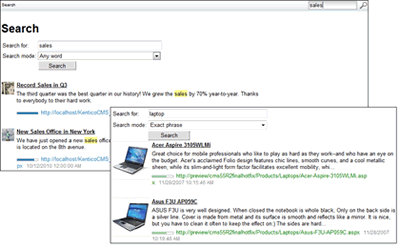
NGRPulse provides full-text search functionality for your website out-of-the-box, without the need to purchase any additional products. Being based on the Lucene.Net search engine library, NGRPulse Smart Search provides relevant results, great performance, flexibility and ease-of-use.
How It Works
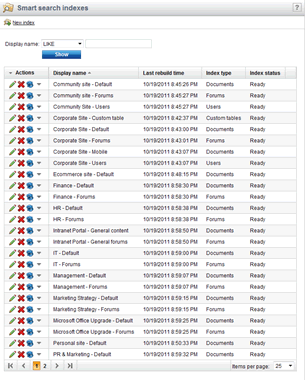
Smart Search retrieves the appropriate data from the database and stores it in an index file using an easily searchable format. When website visitors submit a search expression, the index is scanned instead of the raw data and the results are returned. An index is automatically updated whenever the corresponding website content changes.
No additional development or coding required. Simply define the content of an index through an intuitive interface, add the appropriate smart search web parts onto the pages of your website and the system will take care of the rest.
High Performance
Because searches are performed on index files that are highly suitable for this purpose, results are returned significantly faster than when using serial searches directly through the database. This also ensures that searching is scalable, even for very large volumes of data.
Searchable Content
You may index and search the following types of content and website data:
- Website content (pages, news, etc.)
- Custom tables
- Forums
- Website users
Index Flexibility
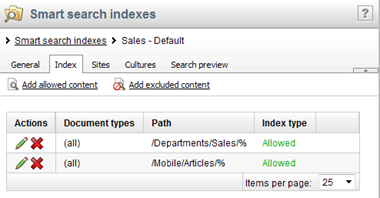
You have full control over the content of every search index. You can precisely specify which pages (documents) from your website should be included in an index and which should be ignored. Similarly, you may set which forums, custom tables or users should be indexed.
Additionally, the search functionality may be limited for visitors according to assigned permissions. This ensures that data from secured website sections will not be displayed to unauthorized users in search results.
File Search Support
If your SQL Server has the Full-Text Search component installed and configured, you can also search through the content of documents uploaded onto your website as attachments. Supported file types include:
- DOCX
- XLSX
- PPTX
- and other formats
Flexible Search Filters
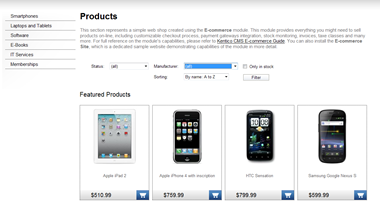
You can add filters to your search dialogs that allow website visitors to limit which search results should be returned. For example, you can filter a product search according to categories, the release date, price range etc.
Advanced Search Expressions
When entering a search expression, you can choose to look for results that contain the exact phrase, any of the entered words or all of the entered words.
Additionally, special syntax can be allowed in search expressions which gives you the option of using advanced search techniques including:
- wildcard search
- logical operators
- range search
- fuzzy search
- searching values in specific object fields
Search Customization
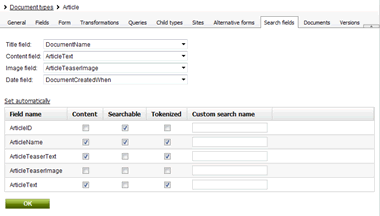
Even though the search solution is delivered fully functional and ready for use, it offers several customization options that you can use to fulfill any specific requirements. You may select which data fields of objects should be searchable and define the exact format and layout of search results.
NGRPulse also allows you to use a custom written search provider or integrate a third-party search engine.
Easily Publish Documents, Images and Video

With NGRPulse, you can easily manage and publish Word, PDF, PPT, images, movies, Flash and even YouTube video and make your website more attractive.
Leverage the Power of Content Repository for Files
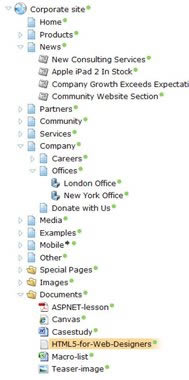
With NGRPulse, you can manage uploaded files as any other document in the content repository and leverage powerful features, such as:
- Workflow
- Versioning with rollback, archiving and restore from the recycle bin
- Granular Permissions
- Multilingual support
- Full-text search in files
- Taxonomy - tags and categories
- SEO-friendly URLs that ensure that uploaded files can be indexed by Google and other search engines
Depending on the file usage, you can choose to store files in the database, on the server disk or both. For faster delivery, you can serve files directly from the disk or even cache the in server memory.
Easily Manage Huge Media Libraries

If you need to manage a large number of media files, such as extensive photo gallleries, or large files, such as videos or large files for download from your website, you can store them in the Media Libraries. Such files are stored only on the disk with metadata stored in the database and they can be accessed through a direct URL address.
Inserting and Resizing Images
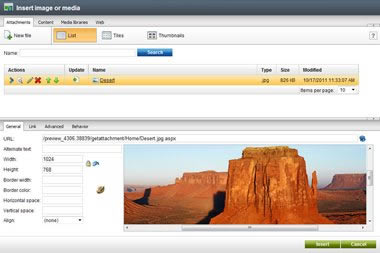
Inserting an image is easy as clicking one button and choosing the file on your disk - no additional steps required. Or you can choose an existing image from the content repository, media library or external website.
NGRPulse takes care of image resizing so that your content administrators cannot publish huge files that would lead to slow loading pages. You can specify maximum size for uploaded files and NGRPulse automatically resizes them during the upload.
If you need to resize the image in the text, you just change its width/height and NGRPulse automatically resizes the image to the given size and reduces file size instead of using the huge original file. It also stores the resized versions on the disk so that it doesn't have to resize it again next time someone displays the image.
Inserting Movies and YouTube Video

With NGRPulse, you can also easily insert movies into the text or even YouTube Video and make your content more engaging.
Displaying Media Galleries

NGRPulse gives you plenty of options how to display galleries of images or other media files - you can use lightbox gallery, image rotators and other built-in webpart or you can easily integrate third-party jQuery libraries for displaying media files with various effects.
You can use custom media players based on Flash or Silverlight to display video or music.
Document Attachments
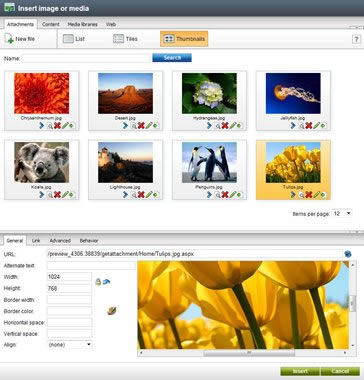
When you insert an image into the text or upload file into a document field (e.g. a "Press Release for download" in news items), the file is bound with given document and its life cycle. It means that it uses its versioning, workflow, security settings and other features, rather than being stored separately. It highly simplifies the management of files that are part of some document and makes it easier for content administrators to keep website content consistent.
Document Libraries
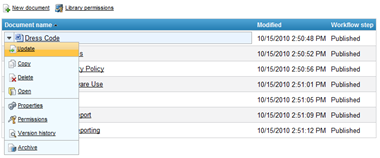
Document Libraries allow you to manage files directly from the website, which suits perfectly the needs of intranet, extranet or community sites that need to enable sharing of documents among site visitors.
Get Rid of File Share Chaos!

Do you have difficult time to manage all your documents and share them with others? Are you lost in dozens of shared folders with complex structure that are difficult to navigate and impossible to search? NGRPulse brings built-in document management that allows you to easily organize your documents on your intranet website, share them with chosen people and make them searchable.
Document Management Made Easy

Document Management is fully integrated into NGRPulse. You can upload files, such as DOC, PDF, XLS, PPT and other formats into NGRPulse and use all content management features, including permissions, search, versioning or workflow. You can also add custom data fields with additional information related to the uploaded documents. You can access the documents through the NGRPulse administration interface or through the Document Libraries on your intranet or extranet site.
Document Libraries

Document Libraries allow you to manage uploaded files through your intranet or extranet site without going to the administration interface. They support:
- Direct editing using Microsoft Office or other applications via WebDAV
- File management Copy/Delete/Open/Edit/Upload
- Permission management on the file or Document Library level
- Check-in/check-out
- Workflow
- Version history and archiving
- Management of multiple language versions of the documents
Workflow and Versioning
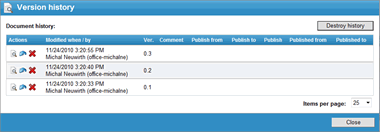
The documents can use all features available for web content, including workflow, check-in/check-out and versioning. You can easily approve the document and send it to the next workflow step, publish it to the website or archive it.
If you need to restore any previous version, you can do a rollback.
WebDAV Support
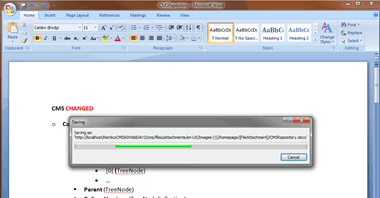
The full power of document libraries is unleashed when you use them together with WebDAV editing. Using WebDAV, you can open files from document libraries on your local computer, edit them and update the original file on the website with the new one. All of that can be done directly, without downloading a copy of the file and uploading its modified version back to the server.
Granular Security
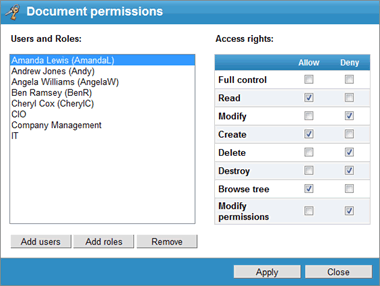
Permissions for particular actions can be configured separately per each user and role, achieving the same level of detailed configuration as with standard document permissions in the administration interface.
